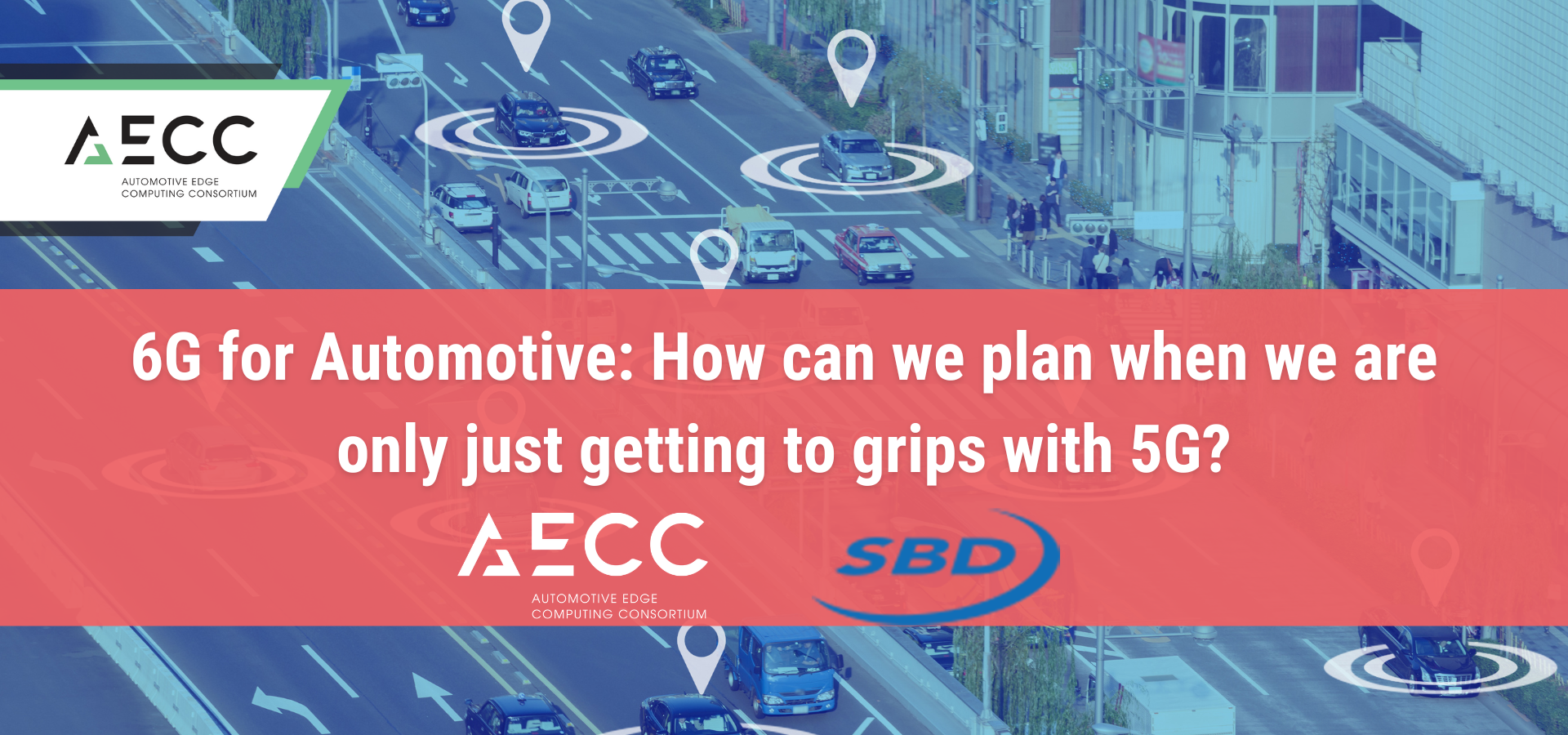6G for Automotive: How can we plan when we are only just getting to grips with 5G?

The AECC recently held its final All-Member Meeting of the year. The opening keynote presentation, “6G for Automotive: How can we plan when we are only just getting to grips with 5G?” was led by Kurt Dusterhoff of SBD Automotive. Kurt provided a brief overview of where connected vehicles are today, where they are going tomorrow, and how that relates to 6G’s deployment plan and the connected services ecosystem.
Kurt began by presenting an outline of the automotive industry’s place on the 6G timeline over the next 20 years. It is expected that 4G and basic 5G will continue production through 2040. From an automotive perspective, widespread penetration of semiautonomous vehicles is expected by 2030. This will also likely be the year when we’re exposed to the beginning of 6G vehicles.
Realistically, high 5G penetration rates into the main market and vehicle fleet are not coming until 2027/2028 due to vehicle costs, regulatory pressures, and architecture pressures. SBD Automotive expects it to take 2-4 years for 5G architecture and vehicle rollout plans to come to fruition, at which point we can expect to see 50% of connected vehicles launching with 5G and more than 50% of manufacturers with extensive 5G capabilities. The chip supply crisis, relatively low consumer-facing benefits of 5G over LTE-A for embedded connectivity, and the architecture/vehicle rollout plans mean that as 6G becomes real, the automotive industry will only just be catching up with 5G.
Once autonomous vehicles are fully operating between 2030 and 2040, 5G will be reaching the end of its career. Based on these predictions, plans for 6G as an industry could then begin.
Today, we can start thinking about how automotive use cases for 6G could work and over the next few years evolve into discovering how use cases will work. We’ll be on our way to introducing 6G in several vehicles by 2030, and later in the decade, 6G will become more prevalent. Stakeholders from across industries need to collaborate to ensure that their respective visions can align with specifications and requirements.
Where might 6G touch the automotive space? There are several areas.
- Public Safety & Critical Asset Protection
The ability to detect threats and monitor personal and device health remotely can be supported through the added bandwidth and ‘device density’ of 6G infrastructure.
- Cyber-Physical Fusion
Ability to quantify and analyze the physical environment in cyber space.
- Vehicle Sensing
Integrated Sensing and Communications within 6G can improve vehicle sensors and turn vehicles into sensors themselves.
- Mobile Holograms
3D hologram displays can create a next gen media opportunity.
- Autonomous Vehicles
Bandwidth, faster transmission, in-network processing, and increased device density all get “more” with 6G – supporting advances in vehicle autonomy.
- Extended Reality
Greater hardware capability and wireless capacity from 6G will enable additional XR opportunities in the vehicle.
Leading automotive tech companies will start to allocate real resources for 6G ideation soon to support concept and specification development more actively. Vehicle manufacturers will steadily come on board over the next 10 years, depending on their technology strategies.
The AECC brings together some key players (tech providers, MNOs, and Automotive OEMs) for early engagement with 6G. But the industry needs wider collaboration than just AECC membership. While widespread 6G adoption is still a way off, now is the time to start thinking about overlaps with other automotive consortia that are either 6G intensive or focused on autonomous vehicles in a way that’s beyond the capabilities of 5G.
We need additional stakeholders from different views, markets, and approaches to collaborate with AECC. The AECC can begin work on piecing together and assuring our voice is heard in a wider context. All stakeholders should gather requirements and understand how to drive future technologies in the same direction.
Throughout the automotive industry, technology has continued to advance. The AECC is proud to contribute to driving the connected vehicle services ecosystem forward at this exciting time in the industry. Special thanks to Kurt Dusterhoff for taking the time to present on this interesting topic.
Find out more about AECC membership and get in touch if you have any questions. Stay on top of the latest with AECC by following us on Twitter and LinkedIn.
